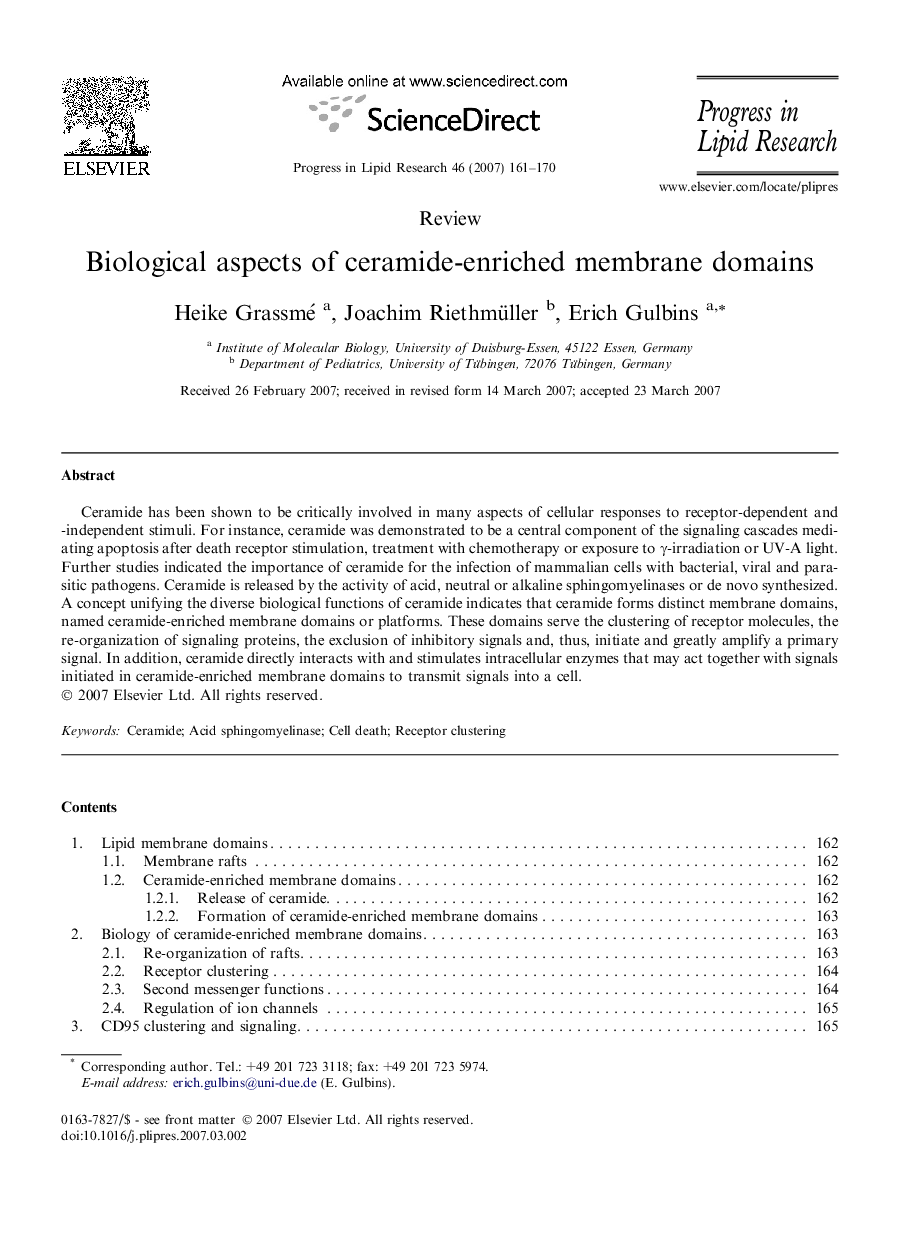| Article ID | Journal | Published Year | Pages | File Type |
|---|---|---|---|---|
| 2019374 | Progress in Lipid Research | 2007 | 10 Pages |
Ceramide has been shown to be critically involved in many aspects of cellular responses to receptor-dependent and -independent stimuli. For instance, ceramide was demonstrated to be a central component of the signaling cascades mediating apoptosis after death receptor stimulation, treatment with chemotherapy or exposure to γ-irradiation or UV-A light. Further studies indicated the importance of ceramide for the infection of mammalian cells with bacterial, viral and parasitic pathogens. Ceramide is released by the activity of acid, neutral or alkaline sphingomyelinases or de novo synthesized. A concept unifying the diverse biological functions of ceramide indicates that ceramide forms distinct membrane domains, named ceramide-enriched membrane domains or platforms. These domains serve the clustering of receptor molecules, the re-organization of signaling proteins, the exclusion of inhibitory signals and, thus, initiate and greatly amplify a primary signal. In addition, ceramide directly interacts with and stimulates intracellular enzymes that may act together with signals initiated in ceramide-enriched membrane domains to transmit signals into a cell.
